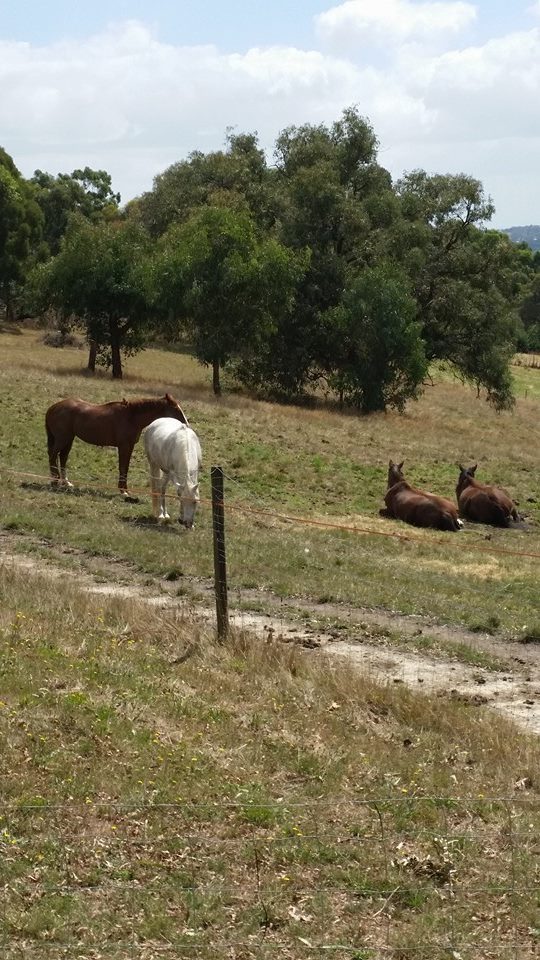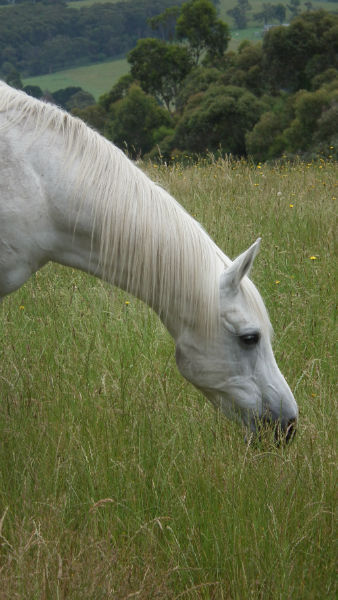







This article is from our newsletter and follows on from another on muscular health and bulk in relation to
maintaining the topline of horses. You will find that article below, title: How do Horses Carry Us?.
In that article we mentioned that all essential amino acids are required to be ingested on a daily basis to maintain
physical and muscular health. This time we will look at the essential amino acids,
what they are, what action they fulfill within the body and how you can best supply them.
Click here to read more about the requirement for amino acids, and how to provide them in horse feed
Most horse riders are aware that it is optimum that a horse has a full
“topline”. In other words we want well formed muscles along the top of the horse's back on which to place our saddle.
It is also very sadly accepted that horses lose their topline.
What is not so well accepted is that we can do much to avoid and correct this, putting your saddle on and riding circles in your arena is not the best answer.
While guidng students and clients, it has hit me that the full picture of what is behind a strong supple back in posture and movement is not well understood.
As such the aim of this newsletter is to open your thoughts to the full picture and how you can easily assist your horse to develop strength and suppleness through this important area of their body.
Click here to read more about maintaining your horse's topline
I was contacted by a concerned mother for help.
Over the last 2 month’s her son’s pony, Hamish, had developed the following behaviours:
1. Significant increase in sweat production – in work and when anxious
2. Easily startled, and constantly focused “out there” and “spooking at everything”
3. Appeared fearful of unknown horses. But over dependant on seeing the horses in the neighbouring paddock.
4. Constantly calling for attention, and refusing to leave the corner of the paddock where he was closest to the other horses
5. No longer happily greeting his rider at the gate
6. Impatient type behaviour eg Pawing
7. Rearing and bucking, which seemed fearful
8. Muscle pain
9. Increased aggression to other horses in the same paddock
Prior to this Hamish carried his rider happily and calmly and I am told that if “horses could purr to show their pleasure in jumping, Hamish would have”.
Click here to read more about including the diet in Equine Behaviour Management
Copper and Zinc are often discussed in relation to equine nutrition. Many claims are made as to the huge requirements horses have and how we could not possibly supply these minerals with a basic diet. Amazing tales are also heard of horses suffering dreadful complaints as a result of deficiency. In reality these minerals are micro minerals – hence are only required in very small amounts in the equine diet. This month I aim to clear this misunderstanding up for all of you to assist in keeping feeding regimes logical and economical.
Click here to read more about copper and zinc in your horse's diet
The following article is on how to fully utilize the pasture your horse has available with a view to maintaining good health and also reducing the costs of horse feeding on a weekly basis.
It will cover:
1. Horse Nutritional needs
2. The role of pasture
3. Ascertaining nutritional short falls in the pasture
4. Improving your pasture to cover the short falls
Introduction:
Horses have evolved as animals that are strict herbivores - that is they eat only plant material. Their teeth, mouth and digestive system have developed to be specialists at the intake and use of high roughage low nutrient feeds such as found in plants including grass.
However horses do need more plant species than grass alone ...
Click here to read more pasture management for horses
At this time of the year, especially, many horses have a
deficiency of pasture and the tendency is for owners to
provide more concentrates in the diet to cover for this lack of
pasture. Unfortunately horses are missing out on their
required intake of roughage, and the extra concentrates being
fed can have a negative effect on their digestive health. So
let us look at the provision of roughage to our horses.
The Requirement For Roughage:
Roughage and water are the most important of all digestive
inputs to our horse diets. A lack of roughage results in a
reduced ability to absorb the nutrients to survive. Despite
this fact more and more horse owners are feeding higher
proportions of concentrated rations and our incidence of
digestive problems is rising.
Click here to read more about the importance of roughage for horses
111 Spillers Road
Macclesfield. Victoria.
Australia 3782
03 5968 9788